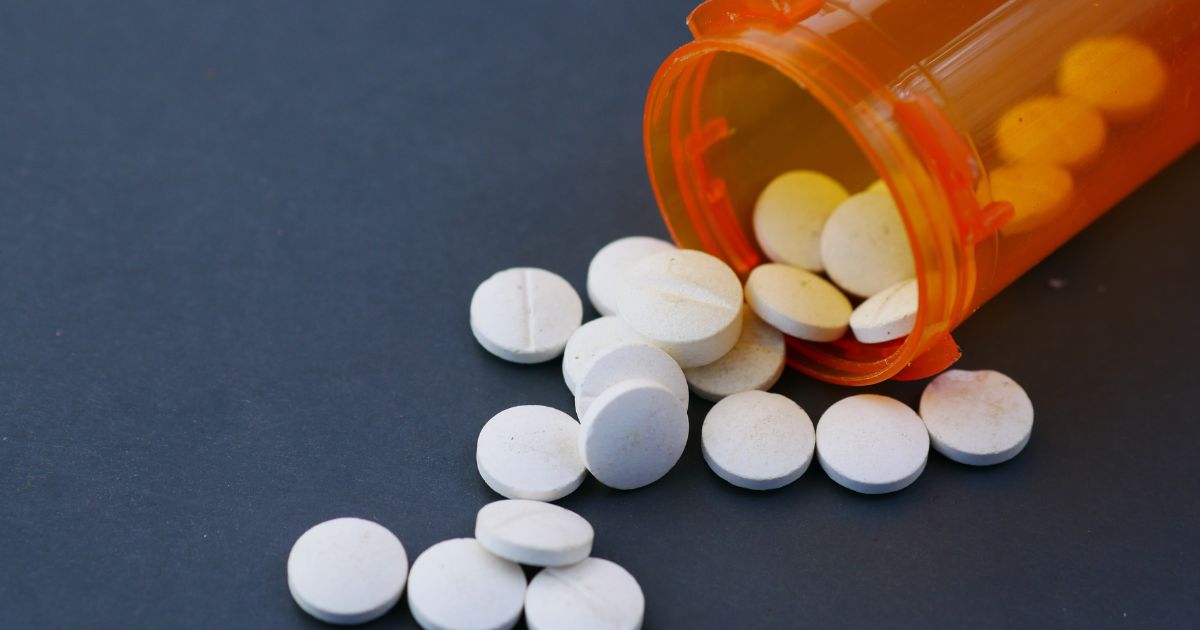States and the federal government have begun suing the country’s largest pharmaceutical companies— “Big Pharma”— over America’s opioid crisis. Accusations against Big Pharma include claims that companies such as Purdue, the manufacturer of Oxycontin, have misled the public— communities, legislators, patients, doctors, and healthcare providers among them— by advertising prescription opioids as appropriate, non-addictive treatment for chronic pain.
It is unclear what Big Pharma’s role in the opioid crisis is, however. Pharmaceutical companies may have facilitated widespread prescription opioid use, but whether this would have happened regardless, and whether or not it served as any sort of catalyst for the scale of the opioid crisis of today, is of yet unknown.
The opioid crisis
Preliminary estimates released this month by the Centers for Disease Control and Prevention (CDC) reveal 72,000 opioid overdose deaths in 2017, a ten percent increase from the previous year. Over 115 people in the U.S. die every day from opioid overdose (CDC). Much of this increase has to do with the changing drug supply and the increasing number of Americans using opioids.
In the late ’90s, pharmaceutical companies like Purdue assured the medical community that prescription opioids, like OxyContin, used to treat chronic pain were not addictive, so the medications began to be prescribed at greater rates. Soon, it became clear that these medications were not just addictive, but highly addictive with high potential for abuse.
Opioids are highly addictive synthetic drugs that mimic the effects of opiates, drugs like heroin and morphine derived from opium. Aside from prescription pills such as oxycodone, hydrocodone, and codeine, there are also opioid analogues such as fentanyl.
These kinds of drugs are relatively easy to misuse; pills may be crushed and injected or inhaled. Fentanyl is misused in the same ways, but it may also appear as a gel in prescription patches. Heroin is most commonly injected. All methods of use have potentially deadly consequences, but IV drug use puts users at an increased risk for the transmission of diseases such as HIV and hepatitis.
Opioids bind to receptors in the brain and release dopamines and endorphins, flooding the brain with feelings of euphoria. Over time, this intense pleasure and heightened mental activity physically rewires the brain to create tolerance and dependence. Opioids, like benzodiazepines, are considered “downers” (as opposed to “uppers,” stimulants like cocaine or amphetamines) and are generally used more for self-medication than for recreational purposes.
Most heroin users first abused prescription opioids like oxycodone and made the switch when they realized they could get the same high for less money from the more accessible— no prescriptions needed for illegal street drugs— heroin. Fentanyl is likely the biggest culprit in recent and rising overdose deaths; of the 72,000 deaths estimated in 2017, 30,000 are linked to fentanyl and fentanyl analogs, the substances that showed the sharpest increase in overdose deaths.
Inside Big Pharma
Purdue Pharma, the maker of OxyContin, and Mallinckrodt Pharmaceuticals, a generic oxycodone manufacturer, are under investigation by the House, which is asking for documentation that details their company practices, including when executives learned of the addictive quality of opioids and information about how the drugs have been marketed. The House also sent a letter to Insys Therapeutics, which manufactured Subsys, a sprayable form of fentanyl.
The House has cited a claim made that shows that Purdue was aware that OxyContin was addictive and being abused soon after it was put on the market in the mid-1990s. Purdue has said that it plans to cooperate with the investigation. States are also suing Purdue for false advertising and over-prescription of OxyContin.
Mallinckrodt has also said that it will comply with congressional requests for transparency.
Insys is being investigated after its founder was charged last year with conspiracy to illegally distribute fentanyl after sales were down.
Numerous states, including New York, which in January filed suit for $5o0 million, are taking legal action against pharmaceutical companies; collectively, billions of dollars in damages are being sought. Some states, like New York, plan to put the damage money towards efforts to fight the opioid crisis.
This month, President Trump blamed China and Mexico for the illegal opioids flowing across the U.S. border and called for federal lawsuits against opioid manufacturers, rather than simply joining state lawsuits in their legal battles against Big Pharma.
The pharmaceutical industry is also hiking up medication prices to the point that some people are unable to afford their prescription drugs. This issue has more to do with the aftereffects of the Obama administration’s Affordable Healthcare Act, but relates to the opioid crisis/Big Pharma issue, as some of these medications are opioids prescribed to people with chronic pain.
But will suing Big Pharma change anything?
The opioid crisis has its roots in the changing supply of drugs and the increased number of opioid users in America— not prescription painkillers. Drugs are becoming more dangerous, as illegally manufactured fentanyl (IMF), often smuggled in from China or Mexico, is cut into methamphetamine, cocaine, and heroin. Carfentanil, too, a fentanyl analogue 100 times the potency of fentanyl and used as an elephant tranquilizer, is showing up in street drugs and causing instant overdose.
While 80 percent of heroin users misused prescription opioids first, only between eight and 12 percent of people prescribed opioids for chronic pain develop an opioid use disorder, and just four to six percent make the switch to heroin, according to data published on the website of the National Institute on Drug Abuse (NIDA).
Increased public awareness of the risks of opioid misuse and closer monitoring of where drugs end up and the channels by which they got there might help to prevent overdose deaths and be more effective than trying to correct what has already been done.
What can be done right now?
Trials and litigation may take months or years, and the opioid-induced death toll is not going to lapse while this takes place. Opioid users can self-manage and lessen health risks to others by safely disposing of used needles, not mixing opioids with alcohol or other drugs, carrying Narcan, and seeking treatment. People without an opioid use disorder should dispose of unneeded prescription medications and refrain from misusing prescriptions (e.g. taking more than prescribed).
Preliminary estimates from the CDC suggest that the opioid crisis will not continue at the scale at which it has been devastating the country. This positive outlook has much to do with how state legislators are taking matters into their own hands and responding to the epidemic. Some promising measures that have been taken, or are being taken/proposed, at the state level include:
Needle exchanges. The U.S. has over 300 needle exchanges in 39 states open to the public. Needle exchanges do not necessarily help to curb the opioid crisis because they do not encourage or discourage opioid use, but they can limit the spread of contagious blood diseases like HIV and Hepatitis C.
Safe injection sites. These sites give users a safe, sterile place to use drugs— the ethics of safe injection facilities (SIFs) are hotly debated— that would have been used regardless, perhaps in an unsafe setting with a dirty needle. Like needle exchanges, SIFs do not necessarily directly help to curb the opioid crisis, but their existence can help limit the spread of infectious diseases such as HIV and Hepatitis C.
These facilities are also staffed by medical professionals who can administer Narcan in the event of overdose, as well as people who can refer drug users to treatment centers and get them addiction help. There are at least 13 SIF efforts underway in several U.S. cities, some major and urban.
Fentanyl test strips. Fentanyl is likely the killer at the center of the opioid crisis. The opioid analogue is being cut into street meth, cocaine, and heroin; being pressed into pills and sold as prescription medications such as oxycodone; and is even being mixed into benzos. The pervasiveness of IMF puts opioid users at even greater risk of overdose, as a minuscule amount of fentanyl is considered a fatal dose. Three milligrams of fentanyl can cause instant death, as compared with a lethal heroin dose of 30 milligrams.
Several cities have started offering free fentanyl test strips that can be used to test street drugs for the presence of fentanyl. The strips do not stop the circulation of opioids, but they may help to prevent overdose deaths. Hopefully, a combination of measures such as these— and perhaps national adoption— and increased public awareness of opioid addiction, with at least some focus on destigmatizing addiction, as well as expanded treatment and addiction help services, will effect change and put overdose deaths on certain decline.
A holistic approach to treating opioid addiction
Royal Life Centers is a network of full-service drug and alcohol detox, inpatient, and outpatient— PHP, IOP, OP, sober living— treatment centers specializing in dependence on alcohol, methamphetamine, cocaine, benzodiazepines, and opioids. Our approach to psychotherapy integrates individual and group therapy sessions, as well as activity, movement, and adventure therapies, into one program that treats mind, body, and spirit.
If you or a loved one has an opioid use disorder, or any substance use disorder, please reach out to us about your detox and treatment options. Royal Life Centers admissions staff is available 24/7 at (877)-RECOVERY to answer your questions and address your concerns Because We Care.









